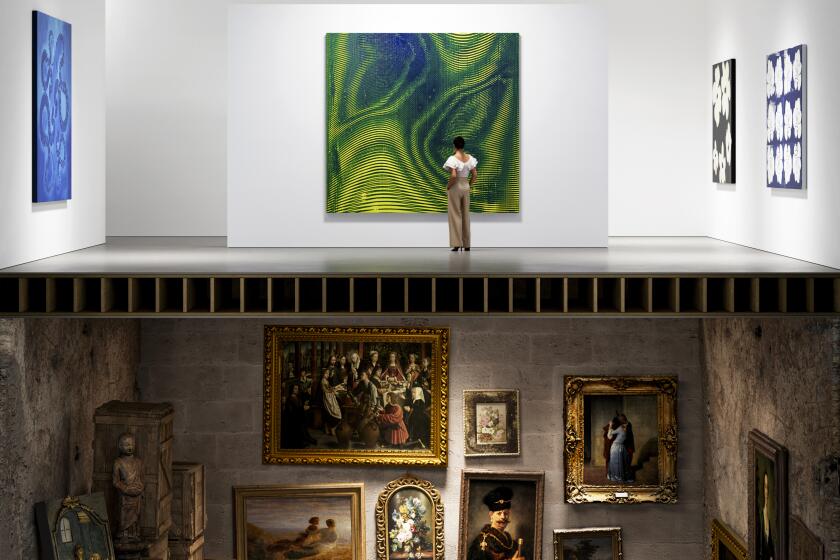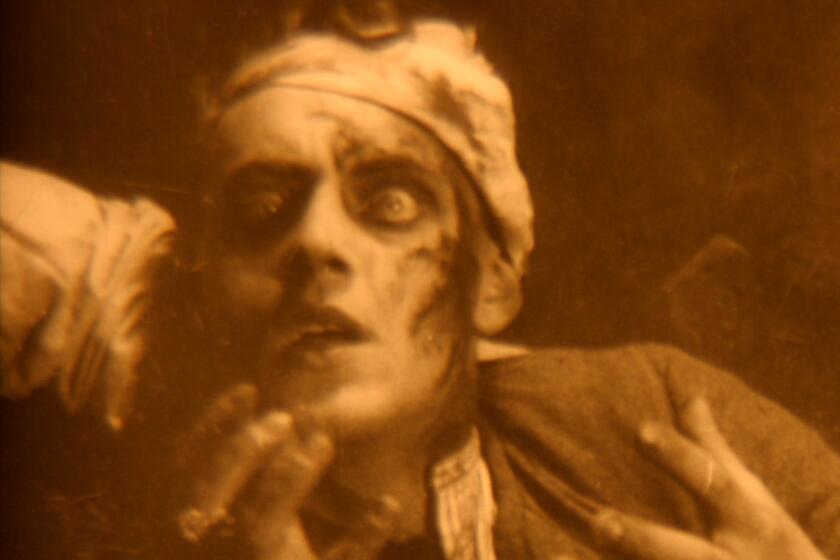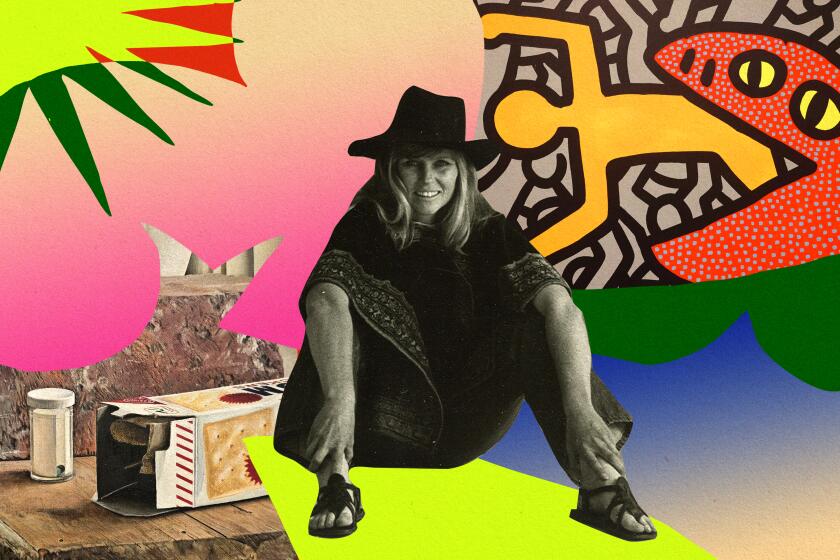Why a LACMA exhibition with compelling art is the most disappointing show of 2023
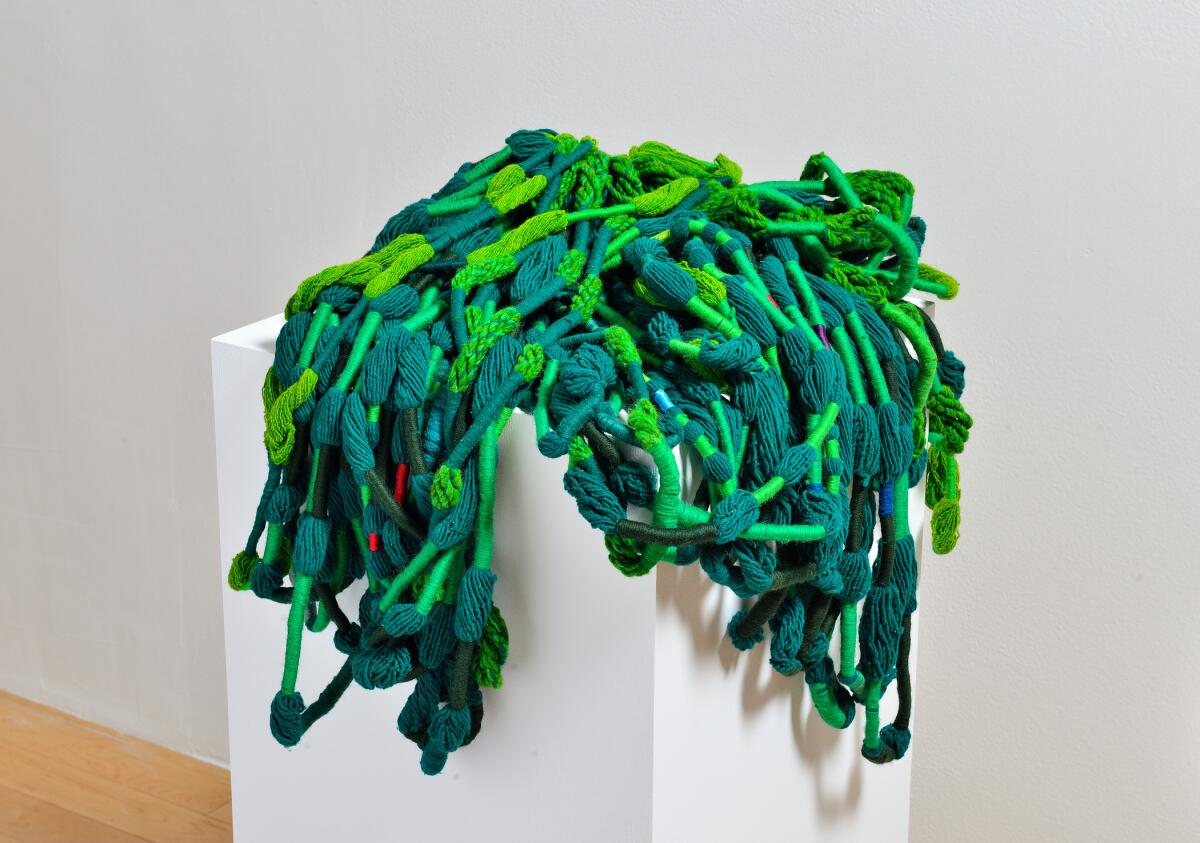
- Share via
In 1910, the great British critic and painter Roger Fry coined the term “Postimpressionist” to describe the visually and conceptually challenging work of Vincent van Gogh, Paul Cézanne and other avant-garde French artists with whom he was smitten. Fry, previously a scholar of European Old Master painting, was just getting started in his deep engagement with the art of his time. Soon he had another bright idea.
Three years later, Fry rounded up Vanessa Bell, Duncan Grant and several other painters and writers associated with London’s bohemian Bloomsbury Group, and together they launched a radical design project. The Omega Workshop, which produced and sold fabrics, furniture and household accessories at a studio and shop in central London, represented a shared belief that distinctions between the decorative and fine arts didn’t make much sense.
LACMA might be a de facto museum of contemporary art, but frankly it’s not a very good one.
In fact, the more abstract avant-garde painting became, with visual representations of the visible world falling away in favor of pure color, geometry and gesture, the less the differences between fine and applied art seemed to matter. Especially in geometric-patterned textiles, the artists wove the vivid colors and stripped-down forms of Postimpressionist, Cubist and Fauvist artworks into urbane, sophisticated yard goods.
Twentieth-century culture was changing, and Fry and friends wanted the accouterments of daily life to modernize with it. Omega, the last letter of the Greek alphabet, was chosen for the project’s name to imply “the last word” in stylish design. The Omega Workshop sought to harness abstraction to inject vibrant visual energy into stuffy bourgeois respectability.

“Woven Histories: Textiles and Modern Abstraction,” the sprawling exhibition of more than 150 intersections between 20th century art and cloth that currently fills an entire floor at the Los Angeles County Museum of Art, would seem an ideal situation for telling the Omega Workshop story. Textiles and fabric-related abstraction are ubiquitous today across contemporary works by a wide variety of artists globally — see, for example, the 2023 Made in L.A. biennial “Acts of Living,” now in its final days at the Hammer Museum. There, a half-dozen artists employ various textile processes in their art. A historical survey tracing origins and cross-cultural relationships would be immensely appealing.
Surprisingly, however, the LACMA show pays no attention at all to the Omega Workshop. Nothing by Fry, Bell or Grant is included, and the nearly 300-page catalog makes no mention of them. There’s lots of impressive art — plus, it turns out, a surfeit of inadequate art history. “Woven Histories” is the most disappointing major art museum show I saw in 2023.
Organized by the National Gallery of Art in collaboration with LACMA, as well as with the National Gallery of Canada and the Museum of Modern Art, it was produced by a pack of heavy hitters. LACMA is its debut. The show looks to well-known examples from a century ago to introduce the subject. Look for compelling work by such marvelous artists as Sophie Taeuber-Arp in Zurich, Hannah Höch in Berlin, Liubov Popova in Moscow and Sonia Delaunay in Paris.
World War I is the focus of an exhibition at LACMA, where its representation as perhaps the first ‘media war’ gets examined.
Anni Albers, arguably the greatest textile artist of them all, worked at the Bauhaus in Weimar, Germany, from 1922 until the Nazis moved the school and then shuttered it in 1933. She’s well-represented, albeit mostly by examples from post-World War II, when Albers worked in the United States.
London, however, has been ghosted. The Omega Workshop didn’t identify individual textile or other designs by the artist’s name, preferring instead to subsume the work into the larger cultural ethos of the early modern era. But when the catalog quotes Delaunay in 1978, a year before her death, asserting that, in retrospect, “There was no gap between my painting and my so-called decorative work” from the 1920s and after, she could have been speaking for Bell, Fry or any of their colleagues in the teens. A painting like her 1913 “Electric Prisms,” with its brilliantly colored and intersecting disk shapes, is precisely the sort of rich abstraction the British artists had in mind as inspiration for their textile projects.
Unfortunately, in the show’s articulation of the “woven histories” of textiles and abstraction, the late 20th century doesn’t fare much better. I was frankly shocked by the omission of artist Jim Isermann, who’s been instrumental for nearly 40 years in elevating to its current prominence the bracing intersection of art and design.
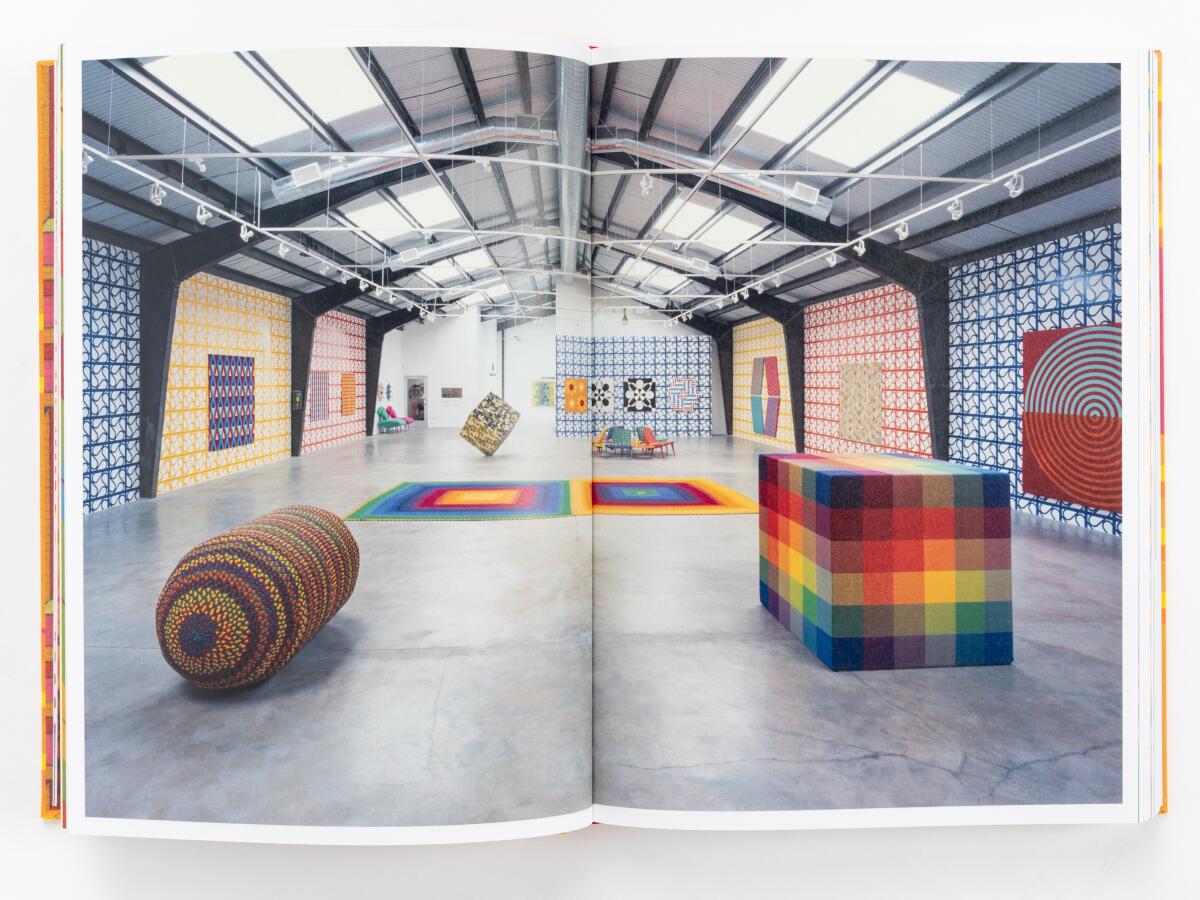
That surprise is partly a matter of geography: A Wisconsin native, Isermann launched his extraordinary investigations into do-it-yourself translations of design and art in Los Angeles in the 1980s. One of an influential cohort of artists who emerged from CalArts, Isermann has lived and worked in Southern California ever since. With LACMA billed as a collaborator in the National Gallery exhibition, one might have expected the museum would insist on his pivotal work’s prominent inclusion in the checklist.
Isermann experimented with screen-printed cloth and pieced-fabric wall hangings in the early 1990s. He built a loom in his studio and taught himself to weave. The zenith was an extraordinary sculpture called “Cubeweave” (1997), a plaid slipcover fitted over a five-foot Minimalist cube. It was one in a series of upholstered forms.
When 2023 began to unfold, pandemic-induced art museum cancellations and postponements seemed to be behind us, as programming mostly caught up. Here are 10 memorable exhibitions from the year.
Minimalism was prominent when Isermann was a student. His brightly upholstered sculpture, made in the wake of the brutal AIDS epidemic, took Minimalism’s classic, masculinist form of an industrial cube and radically domesticated it the way one might do with a used living room sofa. The vividly colored plaid textile pattern represents the 90-degree intersection of two sets of rainbow stripes, further queering the cube’s institutionalized identity as an artistic form. “Cubeweave” is a brilliant foray into the emerging power of a queer aesthetic.
Between the beginning and the end of the 20th century, a truck full of abstract textile art could be driven through the show’s big holes. Other inexplicable omissions mount up. Many are related to various civil rights movements, when artists looked toward materials and art ideas outside the traditional Euro-American establishment, opening the way to the wildly diverse Pattern & Decoration movement of the 1970s. While the movement goes unmentioned, a few memorable P&D-related artists are included, notably Valerie Jaudon, but not Merion Estes, Joyce Kozloff or Kim MacConnel — all of whom employed textiles infused with ideas born of modern abstraction.
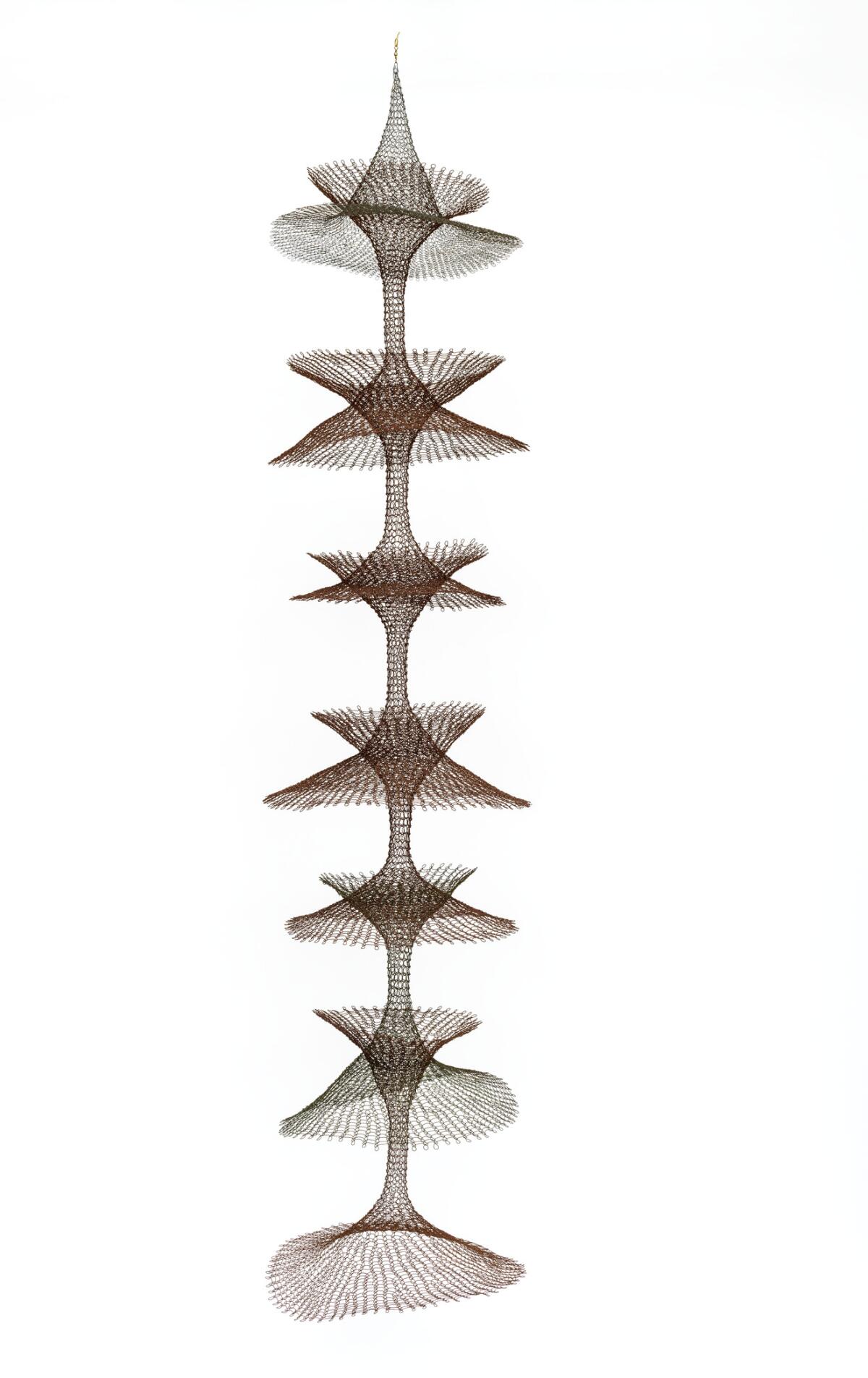
Skipping Robert Rauschenberg’s “Hoarfrost” series of the 1970s is understandable, since the photographic imagery he scattered across yards of ephemeral silk pinned to the wall is largely figurative. But also missing is an example of the bright, abstract acrylics Sam Gilliam saturated into expanses of cotton duck or linen, which he gathered and draped from the ceiling and across the wall. Nor is there an elaborate wall construction of painted-and-pieced fabric by Al Loving.
Since the early 1990s, British Nigerian artist Yinka Shonibare has been out front in bringing issues of colonialism, race and class into the discussion, employing in his work Dutch wax-printed cotton exported to Africa. None are in the show. (A Shonibare installation, “The American Library,” which features 6,000 books wrapped in abstract textiles, is currently in L.A. at the Skirball Cultural Center.)
For reasons I can’t imagine, a Lucas Samaras “Reconstruction” also doesn’t turn up. (LACMA even owns one.) Samaras was known for small, dazzlingly manipulated Polaroid prints in his “Photo-Transformations” series of 1973-76. People took notice when he suddenly began to make big, 8-foot-tall works out of explosively patterned fabrics. Plaid, checked and polka-dotted textiles sewn into zigzagging, overlapped “Reconstructions” shook up the usual interlace produced by a conventional textile loom. That vertical and horizontal interlace — a grid — had been a fundamental structure for Modern abstraction, which was being entirely rethought after the 1960s.
For centuries, from Asia to Europe and beyond, painting often has consisted of colors applied to loomed cloth, especially cotton, linen and silk. The exhibition features fine abstract examples that similarly play off the grid as form and content, including by postwar artists as different from one another as Harmony Hammond, Yayoi Kusama, Agnes Martin, Lenore Tawney, Rosemarie Trockel and Jack Whitten. Sheila Hicks went radically international, establishing workshops in Mexico, Chile and South Africa, where she absorbed textile traditions into fully sculptural objects that also explored qualities of color, both intrinsic to her materials and applied to them.
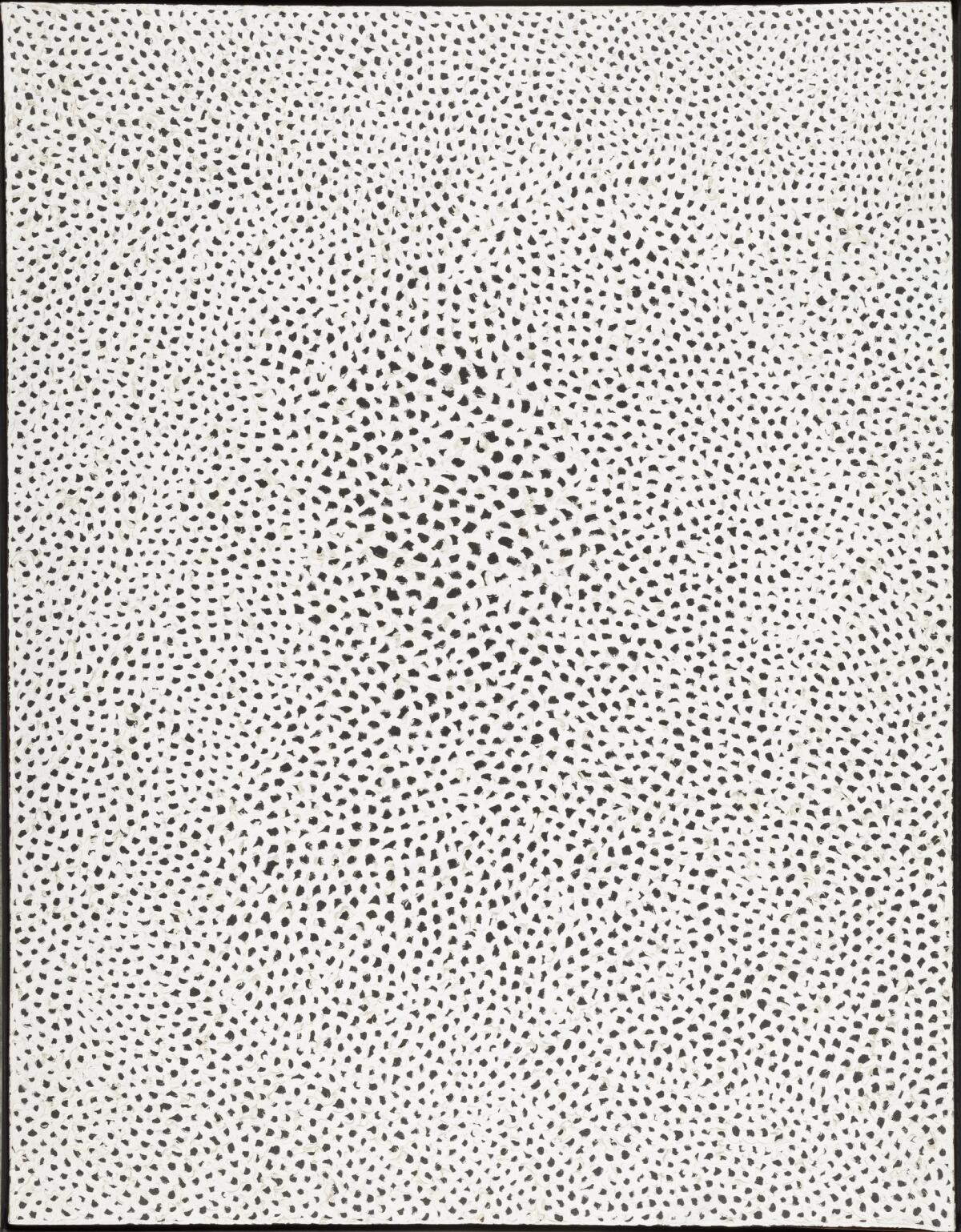
Their works look great in the show. Yet, a third of the way in, the exhibition runs off the rails. A long and unfruitful detour into basketry unfolds.
The knotted loops of wire in Ruth Asawa’s suspended sculptures come from her deep understanding of Mexican baskets, while those in Martin Puryear’s billowing 1984 wall sculpture “Greed’s Trophy” derive from African basketry. Both artists conjure those sources for shrewd formal reasons, finding unconventional methods to make linear drawings in space. Their Latin American and African sources also contain diverse cultural foundations, on which a truly modern abstraction could be built. That’s why Asawa and Puryear are important artists, but textiles are largely irrelevant to their exceptional achievements.
Yes, baskets and textiles are both woven — one mostly by hand and the other often with the aid of machinery. But baskets are virtually always containers; textiles rarely are. The woven relationship between them is loose and, when divorced from context, mostly just semantic.
“Woven Histories” makes the mistake of going all-in on basketry by Berkeley artist Ed Rossbach (1914-2002), not because his art doesn’t merit inclusion here — it does — but because that’s a shaky platform being used to support a host of other artists exploring basketry. Their work fills several rooms. The process orientation of Rossbach’s eccentric experiments with raffia, corrugated paper, newsprint and plastic sheeting in the 1970s and ’80s is lively and distinctive, as well as congruent with a wide variety of developments in Post-Minimal abstraction beyond the textile realm. He even wrote a short but influential book, “Baskets as Textile Art,” to advocate for his specific viewpoint.
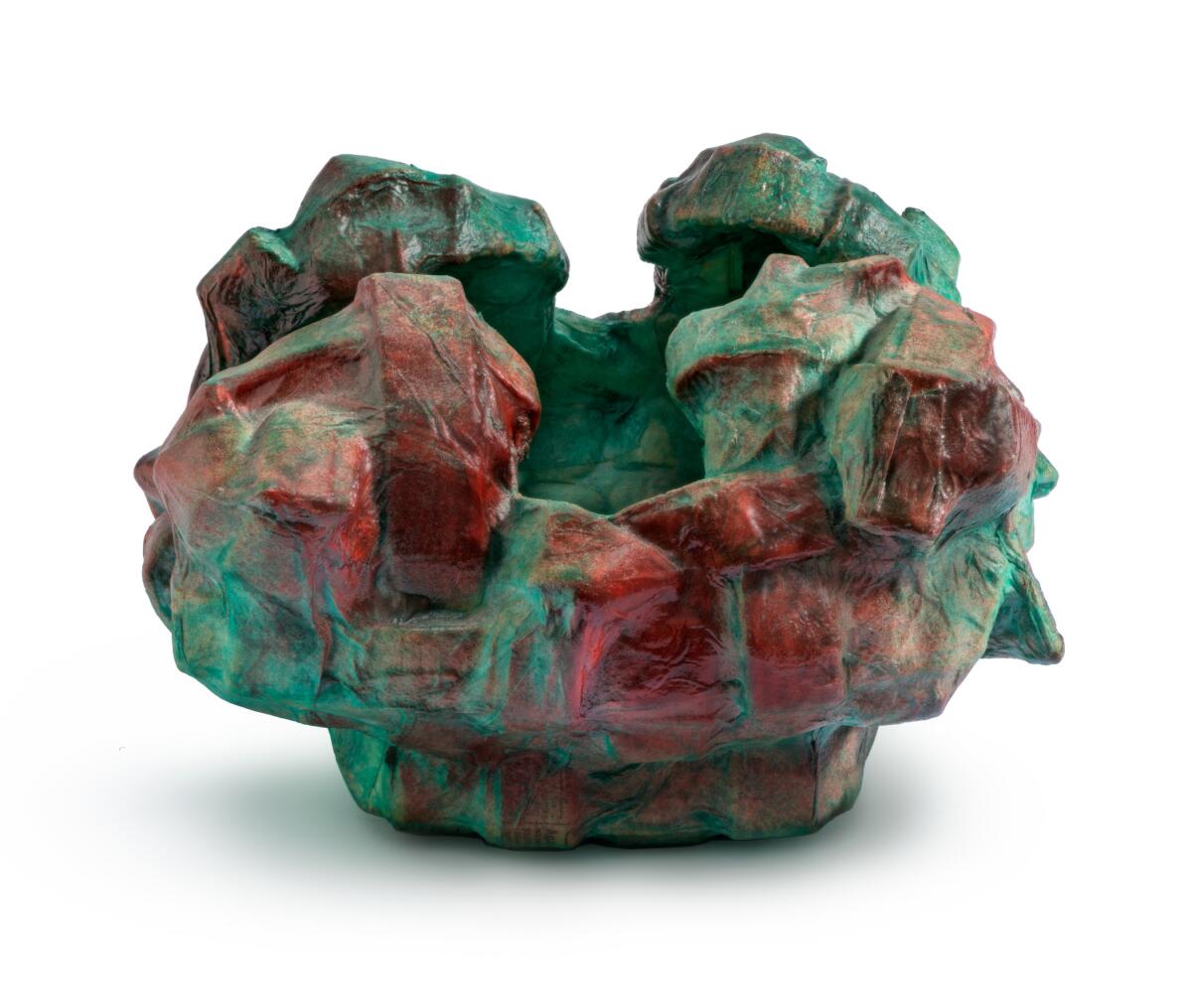
But while looking through all the other basketry included — some of it quite engaging on its own terms, some not — I found myself getting increasingly annoyed with the exhibition. Given all the inexcusable textile omissions, from Bell to Isermann, filling up galleries with baskets because of Rossbach’s example feels gratuitous. The late, great German Conceptual artist Joseph Beuys used to say, “Everybody is an artist,” but I’d much rather see a big museum show of Beuys’ pungent art than a big show of “everybody’s.”
A fundamental problem with “Woven Histories” is that it can’t seem to decide whether it’s an art historical show, as the title proposes, or just another contemporary art exhibition, meant to harness legacy to lend credibility to work made in the past dozen years by an arbitrary selection of international artists, many under 45. A big swath of it was made within the last 15 years. The personal stories at the core of a lovely recent patchwork tapestry assembled from tattered fragments by Diedrick Brackens speak of philosophical transformation, as do the current “Papel Tejido” (woven paper) painted textile-sculptures of Lorenzo Hurtado Segovia, which are appealingly complex. While both artists work in L.A., Brackens is in the LACMA show, but Hurtado Segovia isn’t, for reasons I couldn’t even begin to guess. In a major exhibition, leaving visitors confused by what they are — or are not — seeing is a curatorial recipe for equally major disappointment.
Woven Histories: Textiles and Modern Abstraction
Where: LACMA, 5905 Wilshire Blvd., Los Angeles
When: Through Jan. 21. Closed Wednesdays
Info: (323) 857-6000, lacma.org
More to Read
The biggest entertainment stories
Get our big stories about Hollywood, film, television, music, arts, culture and more right in your inbox as soon as they publish.
You may occasionally receive promotional content from the Los Angeles Times.
